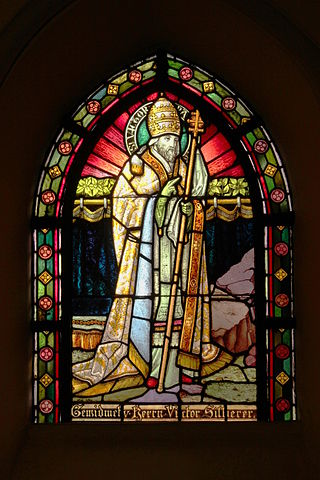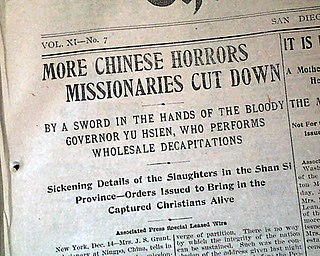The massacre
The story of the massacre is described by Mr R. Stewart, of the Kaffrarian Mission as follows:
Afterwards we learned that within half an hour of our departure from St. Paul's the (impi) army of the Pondomise arrived there, and burned the teacher's house and church; so that the thunderstorm, despite the wetting it gave us, was a great mercy, in that it probably delayed their arrival until after our departure. We desired to send a body of men from this place to another out-station, Umbogolwana (Mboktwana), to bring out the teachers and native Christians there. But owing to the smallness of our force this was deemed, by the leaders of the expedi tion, impossible. These poor people at Umbogotwana (Mboktwana), I have learned since, were surrounded the following night, and seven of the men killed, amongst whom were Klass Lutseke, the native catechist, Joshua Mabengwana, the schoolmaster, and Daniel Sokombela, the schoolmaster of Umjika; the women and children were allowed to escape, however, and many of them, including the families of Klass, Joshua, and Daniel, have, after great privations, reached us here at Umtata in safety.
Callaway describes how Bransby Key, bishop of St John's understood that the massacre was an attack on Christians rather than on a racial or tribal group (the Fingoes).

Pope Victor I was a Roman African prelate of the early Christian Church who served as Bishop of Rome in the late second century. The dates of his tenure are uncertain, but one source states he became pope in 189 and gives the year of his death as 199. He was born in the Roman Province of Africa—probably in Leptis Magna. He was later considered a saint. His feast day is celebrated on 28 July as "St Victor I, Pope and Martyr". He was of Berber origin.
The purpose of this timeline is to give a detailed account of Christianity from the beginning of the current era (AD) to the present. Question marks ('?') on dates indicate approximate dates.

The Korean Martyrs were the victims of religious persecution against Catholics during the 19th century in Korea.

The Redemptorists officially named the Congregation of the Most Holy Redeemer, abbreviated CSsR, is a Catholic clerical religious congregation of pontifical right for men. It was founded by Alphonsus Liguori at Scala, Italy, for the purpose of labouring among the neglected country people around Naples. It is dedicated to missionary work and they minister in more than 100 countries. Members of the congregation are Catholic priests and consecrated religious brothers.

The seventy disciples, known in the Eastern Christian traditions as the seventy apostles, were early emissaries of Jesus mentioned in the Gospel of Luke.
In the Acts of the Apostles, Joseph Barsabbas was one of two candidates qualified to be chosen for the office of apostle after Judas Iscariot lost his apostleship when he betrayed Jesus and committed suicide. After the casting of lots he was not chosen, the lot instead favoring Matthias to be numbered with the remaining eleven apostles.
The Passionists, officially named the Congregation of the Passion of Jesus Christ, abbreviated CP, are a Catholic clerical religious congregation of pontifical right for men, founded by Paul of the Cross in 1720, with a special emphasis on and devotion to the Passion of Jesus Christ. A known symbol of the congregation is the labeled emblem of the Sacred Heart of Jesus, surmounted by a cross. This symbol is often sewn into the attire of its congregants.

Richard Gwyn, also known by his anglicized name, Richard White, was a Welsh teacher at illegal and underground schools and a Bard who wrote both Christian and satirical poetry in the Welsh language. A Roman Catholic during the reign of Queen Elizabeth I of England, Gwyn was martyred by being hanged, drawn and quartered for high treason at Wrexham in 1584. He was canonized by Pope Paul VI in 1970 as one of the Forty Martyrs of England and Wales. Since its creation in 1987, St. Richard Gwyn has been the Patron Saint of the Roman Catholic Diocese of Wrexham. Along with fellow lay martyr St. Margaret Clitherow, Gwyn is the co-patron of the Latin Mass Society of England and Wales.
The Lutheran Church has, from the time of the Reformation, continued the remembrance of saints. The theological basis for this remembrance may be best illustrated in the words of the Epistle to the Hebrews 12:1. The Apology of the Augsburg Confession states that the remembrance of the saints has three parts.
The Sheo Yang Mission was a Protestant Christian missionary society that was involved in sending workers to China during the late Qing dynasty. It was founded by the Pigott family in 1892, they had previously been members of the China Inland Mission (CIM). The mission was destroyed and most members murdered in 1900, the work continued through the Baptist Missionary Society.

The Martyr Saints of China, or Augustine Zhao Rong and his Companions, are 120 saints of the Catholic Church. The 87 Chinese Catholics and 33 Western missionaries from the mid-17th century to 1930 were martyred because of their ministry and, in some cases, for their refusal to apostatize.
This article lists the feast days of the General Roman Calendar as approved on 25 July 1960 by Pope John XXIII's motu proprioRubricarum instructum and promulgated by the Sacred Congregation of Rites the following day, 26 July 1960, by the decree Novum rubricarum. This 1960 calendar was incorporated into the 1962 edition of the Roman Missal, continued use of which Pope Benedict XVI authorized in his 7 July 2007 motu proprio Summorum Pontificum, and which Pope Francis updated in his 16 July 2021 motu proprio Traditionis custodes, for use as a Traditional Roman Mass.

Jean-Théophane Vénard was a French Catholic missionary to Indo-China. He was a member of the Paris Foreign Missions Society. He was beatified in company with thirty-three other Catholic martyrs, most of whom were natives of Tonkin, Cochin-China, or China. Pope John Paul II canonized him, with nineteen other martyrs, in 1988.

The Kucheng massacre was a massacre of Western Christians that took place at Gutian, Fujian, China on August 1, 1895. At dawn of that day, a fasting folk religious group attacked British missionaries who were then taking summer holidays at Gutian Huashan, killing eleven people and destroying two houses. The Kucheng Massacre is considered one of the worst attacks against foreigners in China prior to the Boxer Movement in 1899–1901, the only comparable event in China's missionary history being the Tianjin Massacre in 1870.

The Taiyuan massacre took place during the Boxer Rebellion, July 9, 1900, in Taiyuan, Shanxi province, North China. Sources recall that they were killed in the presence of Yuxian, governor of Shanxi. 44 people were killed including children.
Early Christianity, otherwise called the Early Church or Paleo-Christianity, describes the historical era of the Christian religion up to the First Council of Nicaea in 325. Christianity spread from the Levant, across the Roman Empire, and beyond. Originally, this progression was closely connected to already established Jewish centers in the Holy Land and the Jewish diaspora throughout the Eastern Mediterranean. The first followers of Christianity were Jews who had converted to the faith, i.e. Jewish Christians. Early Christianity contains the Apostolic Age and is followed by, and substantially overlaps with, the Patristic era.

In Christian theology and ecclesiology, the apostles, particularly the Twelve Apostles, were the primary disciples of Jesus according to the New Testament. During the life and ministry of Jesus in the 1st century AD, the apostles were his closest followers and became the primary teachers of the gospel message of Jesus. There is also an Eastern Christian tradition derived from the Gospel of Luke of there having been as many as seventy apostles during the time of Jesus' ministry.

Charles Stewart Thompson was the first medical missionary in Kherwara Chhaoni in Rajputana, the Bhils region of Central India. His schools, famine relief centers, and medical service transformed care in the region.
In 1544, during the Crisis of the Sixteenth Century (1521–1597) in the Jaffna Kingdom, Cankili I killed 600 Catholic converts. Portuguese missionaries attributed the baptism, martyrdom and intercession of the Mannar Martyrs for the rapid conversion and growth of Catholicism in Sri Lanka. In a letter found in the Archives of the Society of Jesus (S.J.) dated 19 December 1561, Anrique Anriquez the first Mannar parish priest (1561–1564) gives details to how rapidly the island was converted, and churches and hospital built all around the island. The Christians of the island of Mannar were held up as a model. He wrote since their arrival, over a thousand people converted to Christianity. A Sri Lankan trilingual film named Praana, was made in 2022, based on this incident.










